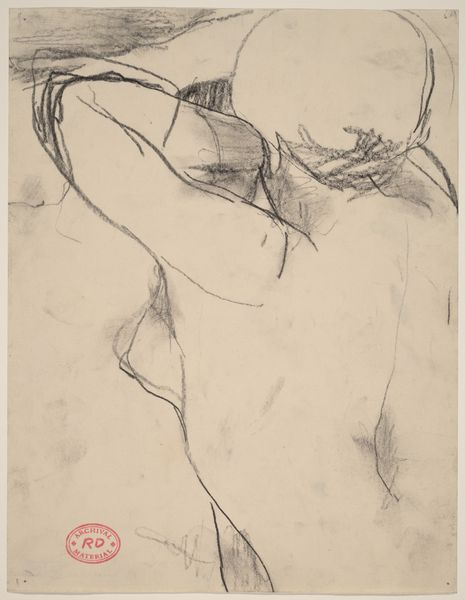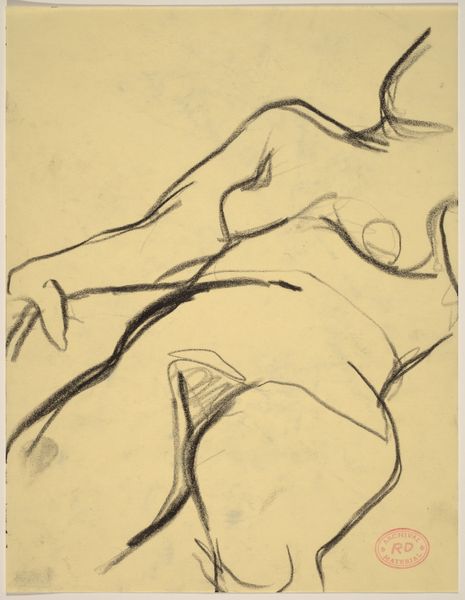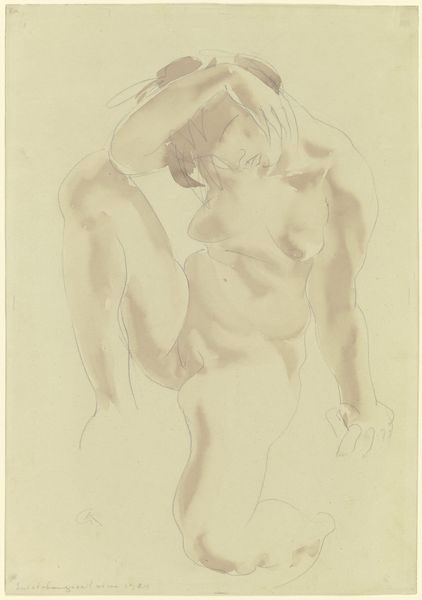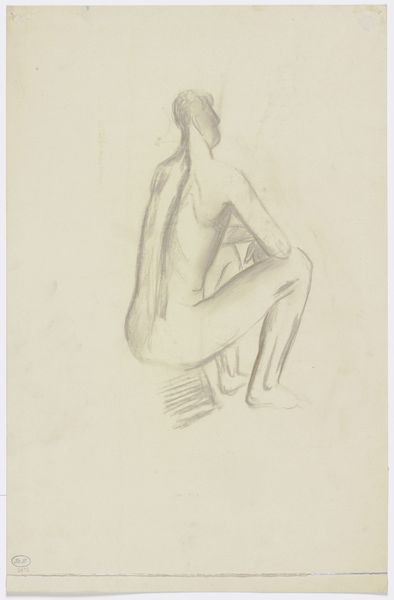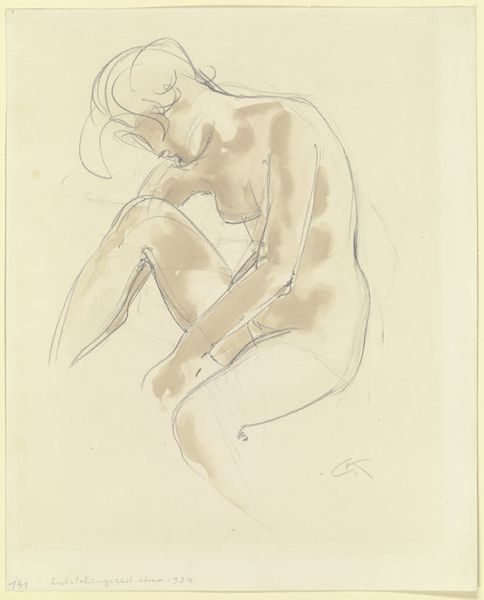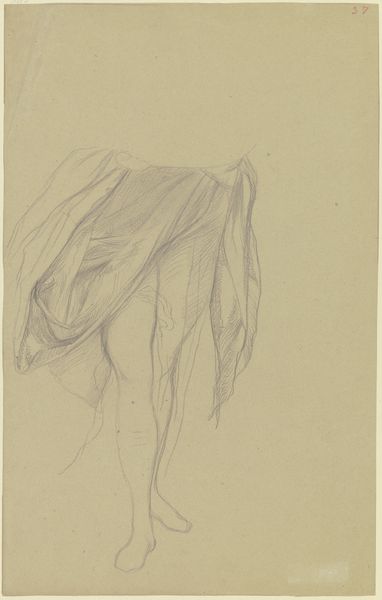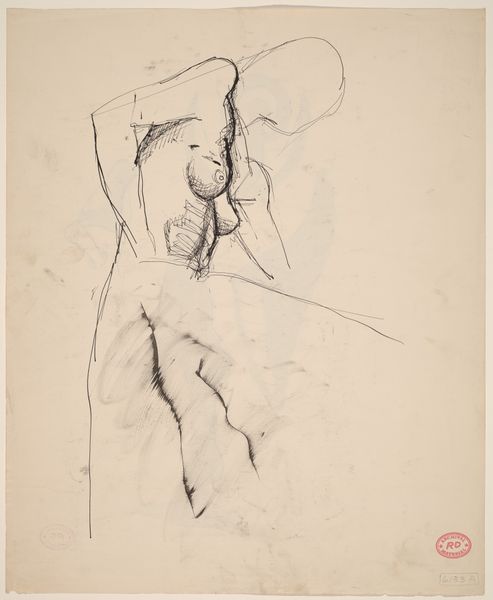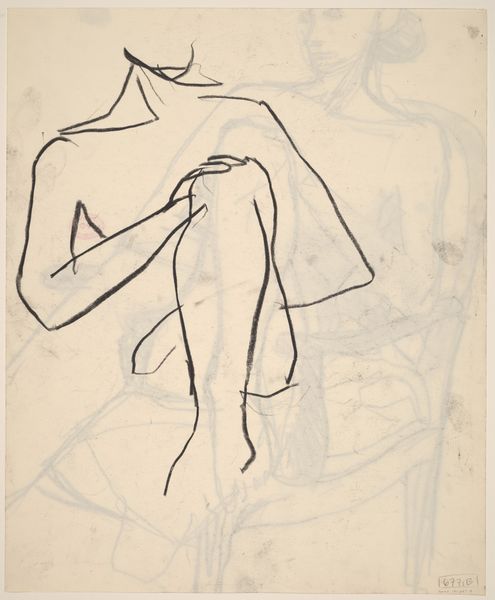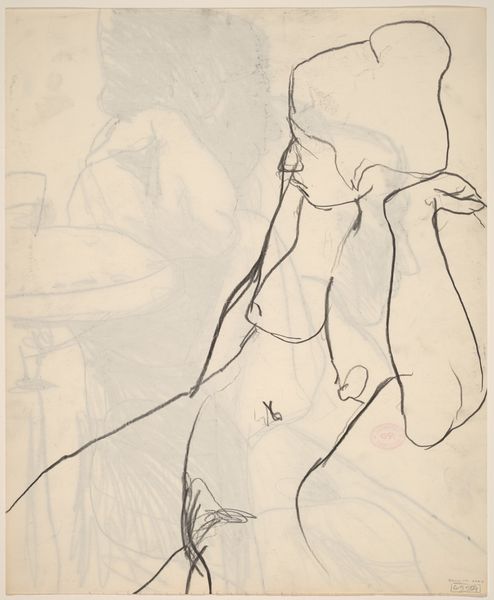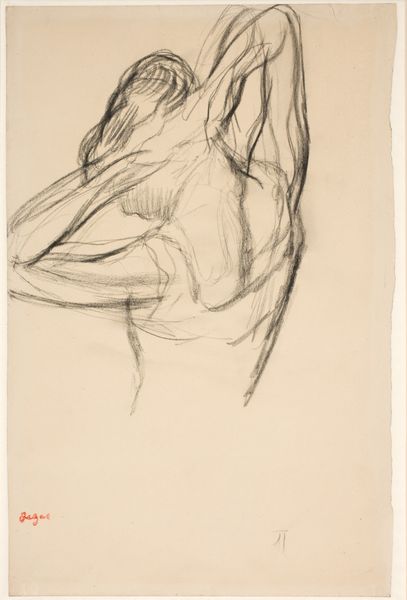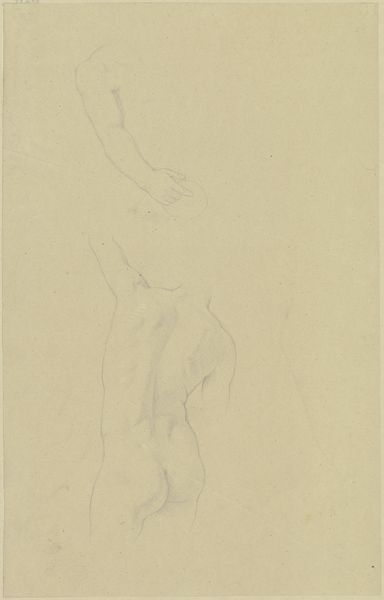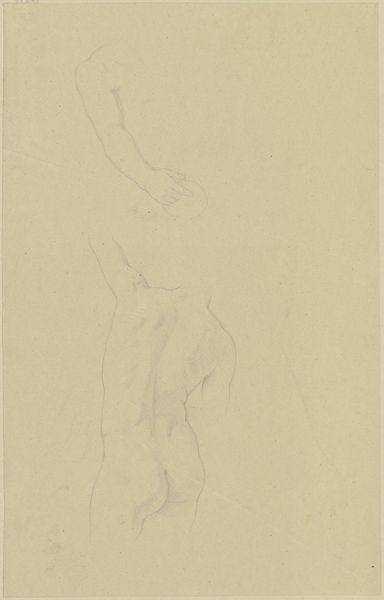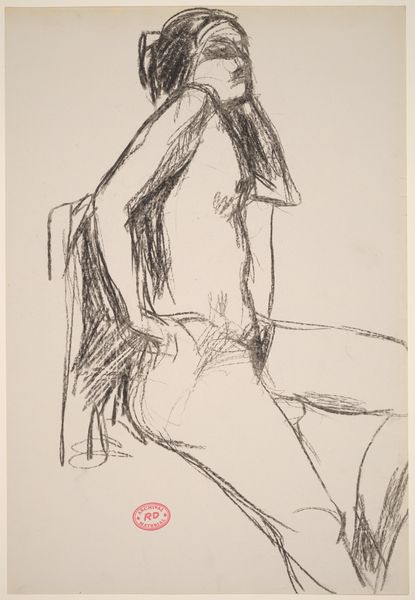
Bovenlichaam van een man met touw over zijn schouder 1878 - 1938
0:00
0:00
richardnicolausrolandholst
Rijksmuseum
drawing, pencil
#
portrait
#
drawing
#
amateur sketch
#
light pencil work
#
ink drawing
#
pencil sketch
#
incomplete sketchy
#
figuration
#
personal sketchbook
#
ink drawing experimentation
#
pen-ink sketch
#
pencil
#
sketchbook drawing
#
sketchbook art
Dimensions: height 325 mm, width 335 mm
Copyright: Rijks Museum: Open Domain
Curator: Before us, we have “Bovenlichaam van een man met touw over zijn schouder,” or "Upper body of a man with rope over his shoulder," a pencil drawing attributed to Richard Nicolaüs Roland Holst, created sometime between 1878 and 1938. It's currently held at the Rijksmuseum. What strikes you initially about this piece? Editor: The vulnerability. The figure is partially rendered, almost dissolving into the paper itself. The rope draped across the shoulder could speak to constraints, perhaps labor, or even the societal bindings of masculinity. It's an unfinished thought, raw and immediate. Curator: Indeed, the composition leads to such considerations. The limited palette emphasizes line and form; Holst expertly models the muscles of the arm and shoulder using delicate gradations in pencil. We see a clear understanding of anatomy informing the sketch. Editor: I appreciate the understanding of form you highlight. And yet, seeing that rope prompts thoughts about power structures, exploitation. Was the subject a worker? A prisoner? How might that shape our reading of this image within a broader socio-political landscape? Curator: The sketch provides limited contextual clues in this regard. While we might overlay contemporary frameworks onto the artwork, what is most directly observable is how Holst articulates a moment of tension. Note how the hand firmly grips the rope. Editor: Agreed, but this image cannot escape its history! Consider art’s role in either challenging or perpetuating exploitative systems, even indirectly. And let's acknowledge, these narratives are deeply intertwined with how we engage with this work today. Curator: Fair enough. Although this remains a sketch, presumably a quick study, it does speak to Holst’s mastery of representing the human form with minimal strokes. The economy of means is quite effective. Editor: Right, effective, and aesthetically compelling. I think its strength also rests on its ambiguity; the figure's narrative remains open to interpretation, prompting ongoing dialogue about the role of art and history. Curator: It serves, perhaps, as a reminder that even incomplete images can provoke complex responses. Editor: Leaving us to consider how context forever colors the way we perceive these representations of our shared humanity.
Comments
No comments
Be the first to comment and join the conversation on the ultimate creative platform.
